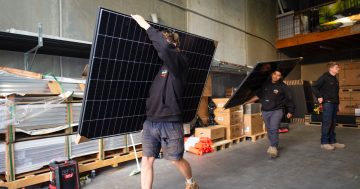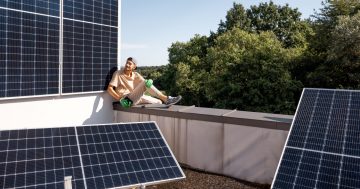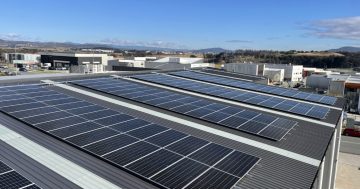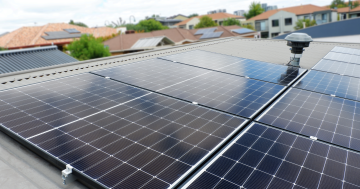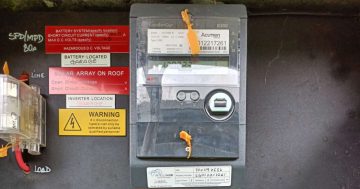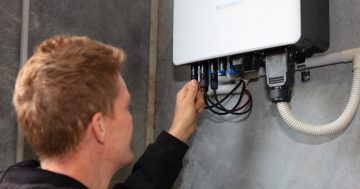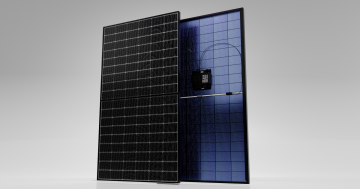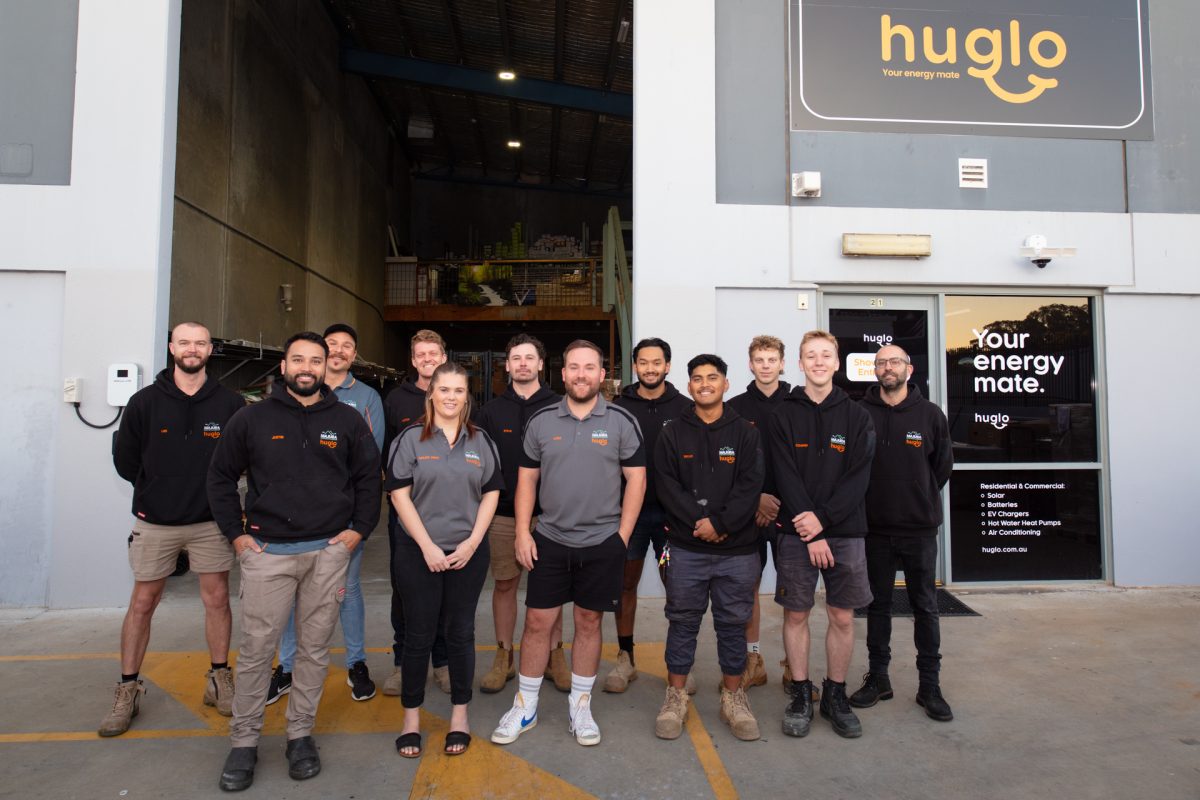
“Your Energy mate” is the catchphrase for Huglo, a company with an app that will continue to look after clients’ interests long after they’ve installed energy infrastructure. Photo: Thomas Lucraft.
An unbiased and locally created electricity plan comparison app could divert hundreds of dollars a year from your electricity provider back into your pocket.
Canberra-based one-stop energy shop Huglo Solar has rounded off its service offering of solar, battery, EV charger and hot water heat pump installations with a free app that helps clients get the best value electricity plan on an ongoing basis.
Users can either fill in a brief form or upload a recent electricity bill, leaving it to the technology to auto parse the data.
Considering comprehensive data points such as your usage and solar power system (if applicable) and running it past all the available plans in your region, the app spits out a list of the most economically sensible plans available to you.
Users can further narrow the list by filtering according to what’s important to them, such as preferences for Australia-based providers or those who offer local customer service.
With about 19,000 electricity plans active across the National Electricity Market at any one time, Huglo Solar director Tim Sturgiss says it’s an invariably useful tool on an ongoing basis.
“The way retailers work is they have a honeymoon period, sign people up and then six or nine months later, they increase the rates and hope to God people are too busy to monitor it or move their plans over. That’s when they start making money,” he says.
It’s not solving a new problem. The Federal Government has long regulated the sector with price caps and encouraged consumers to shop around regularly, but Tim says the majority of people are still victims of a cumbersome, complex reporting system.
“Consumers don’t constantly think about energy the way we in the business do, and that’s understandable. But it means so many people sink a lot of energy into finding the best plan initially, and lose any savings 10 times over by not keeping tabs on their plans,” he says.
“And lots of business are happy to come in, throw some panels on your roof and not think about it after. We wanted to help people look after their plans, and be a full service provider, which is uncommon in the market.”
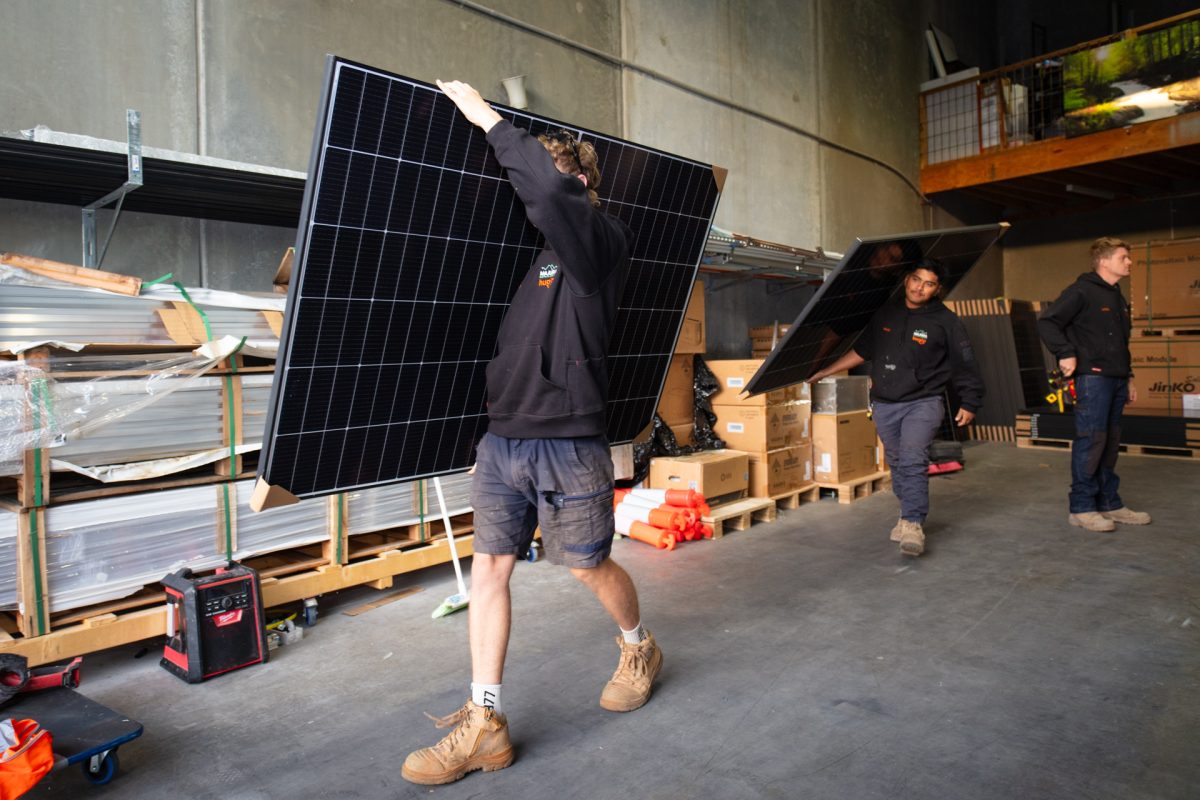
Huglo can advise the electricity plan best suited to clients, taking into account factors such as usage and solar systems. Photo: Thomas Lucraft.
Though comparison websites and plans have long existed, many will only compare or recommend plans for which they receive kickbacks, calling into question the integrity of recommendations they make to consumers.
While Huglo claims a referral fee from some providers, consumers are guaranteed an objective data-based list of recommendations based on a comparison of all providers. This is because the service is an integral part of Huglo’s value proposition.
Tim says the app, which Huglo’s owners created before creating the business itself, helps address a gap in data literacy that’s costing consumers hundreds each year.
“Energy bills are hard for the average consumer to understand, and there are a lot of factors adding to that complexity,” he says.
“For starters, people with smart meters are usually charged on a ‘time of use’ basis, rather than a flat rate per kilowatt. That means you’re charged based on not only how much electricity you use, but the time of day you use it. You can try to build a spreadsheet, record the data and try to understand it that way, but the app solves that issue for you.
“Adding further complexity, if you have a solar system, retailers might offer you a nice feed-in tariff, meaning they will pay you to put excess energy into the grid. So a high usage plan might seem to be the best option.
“But depending on what you’re pushing into the grid and at what time, this could actually end up costing you money. You might, in fact, get better net value by going for a plan with lower feed-in tariffs at a lower cost.”
Tim says complexity has been a “theme” for energy regulators for years now, and the problem is only going to get worse.
With about 19,000 solar plans along the east coast alone, there’s no shortage of noise.
“We built the app to help people cut through all that, understand the best use of their capital, and to make it easy to put that to the test regularly, without having to rely on commercial websites that are only interested in their own bottom line,” Tim says.
“We’ve had clients who’ve been with us for years who use the app every six months or so, and it could mean saving $300 or $400 a year. And every little bit counts right now.”
Give it a go on Huglo Solar.












